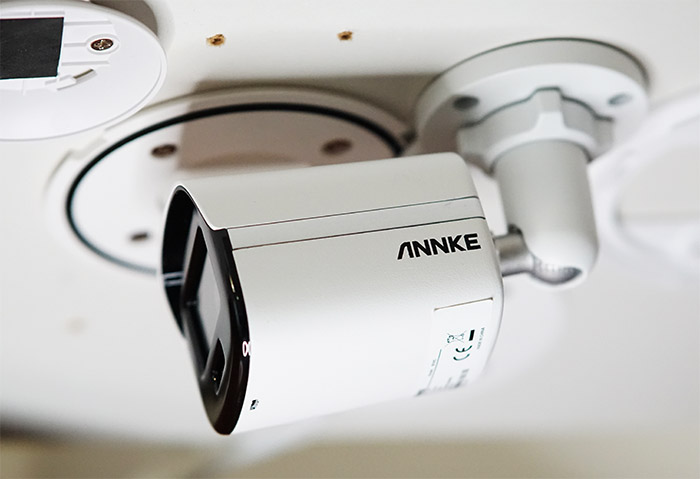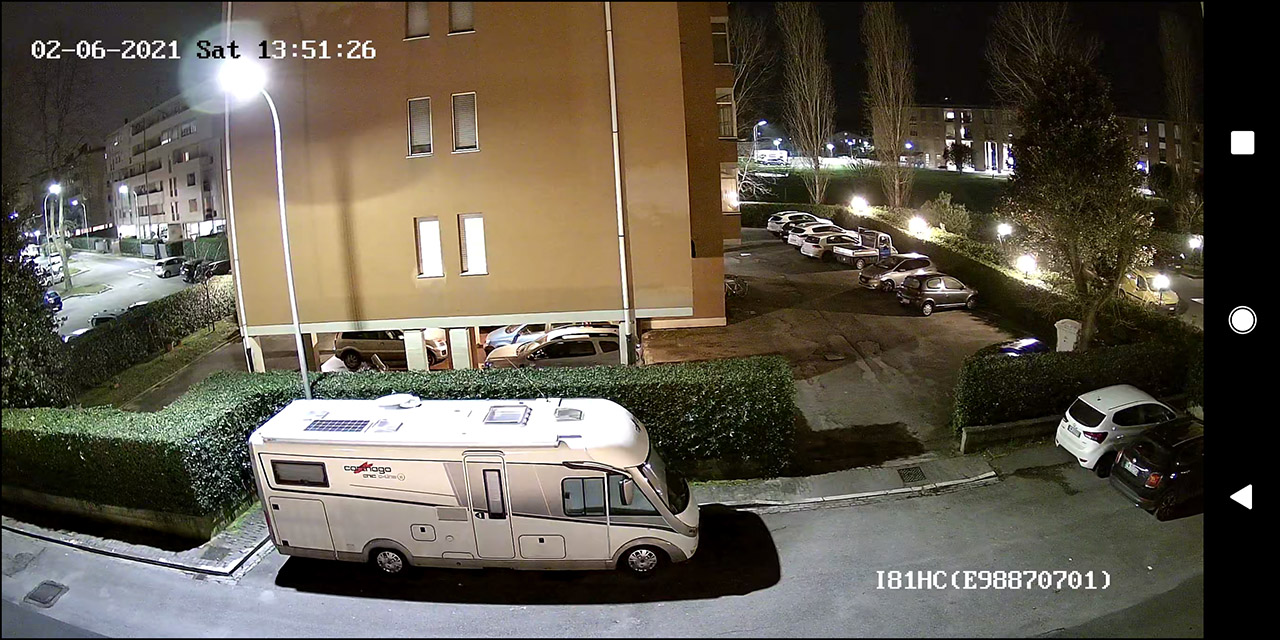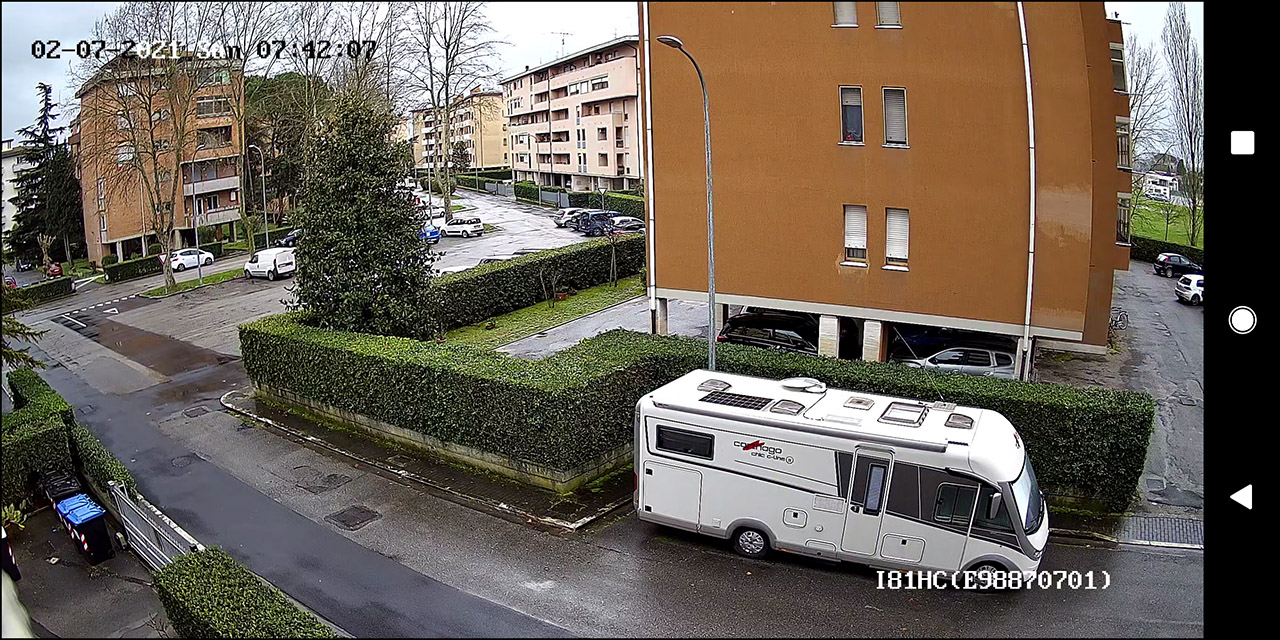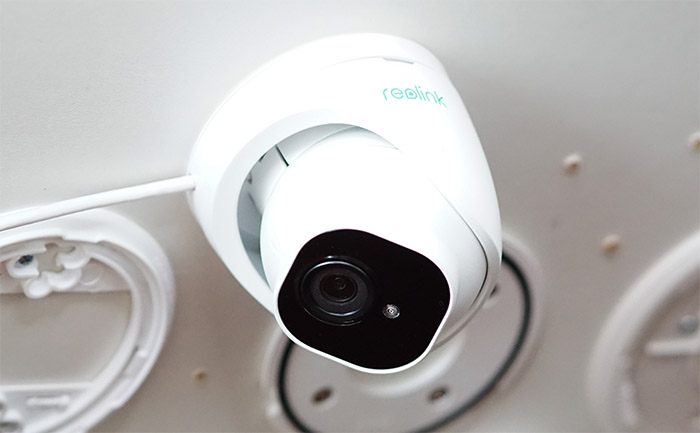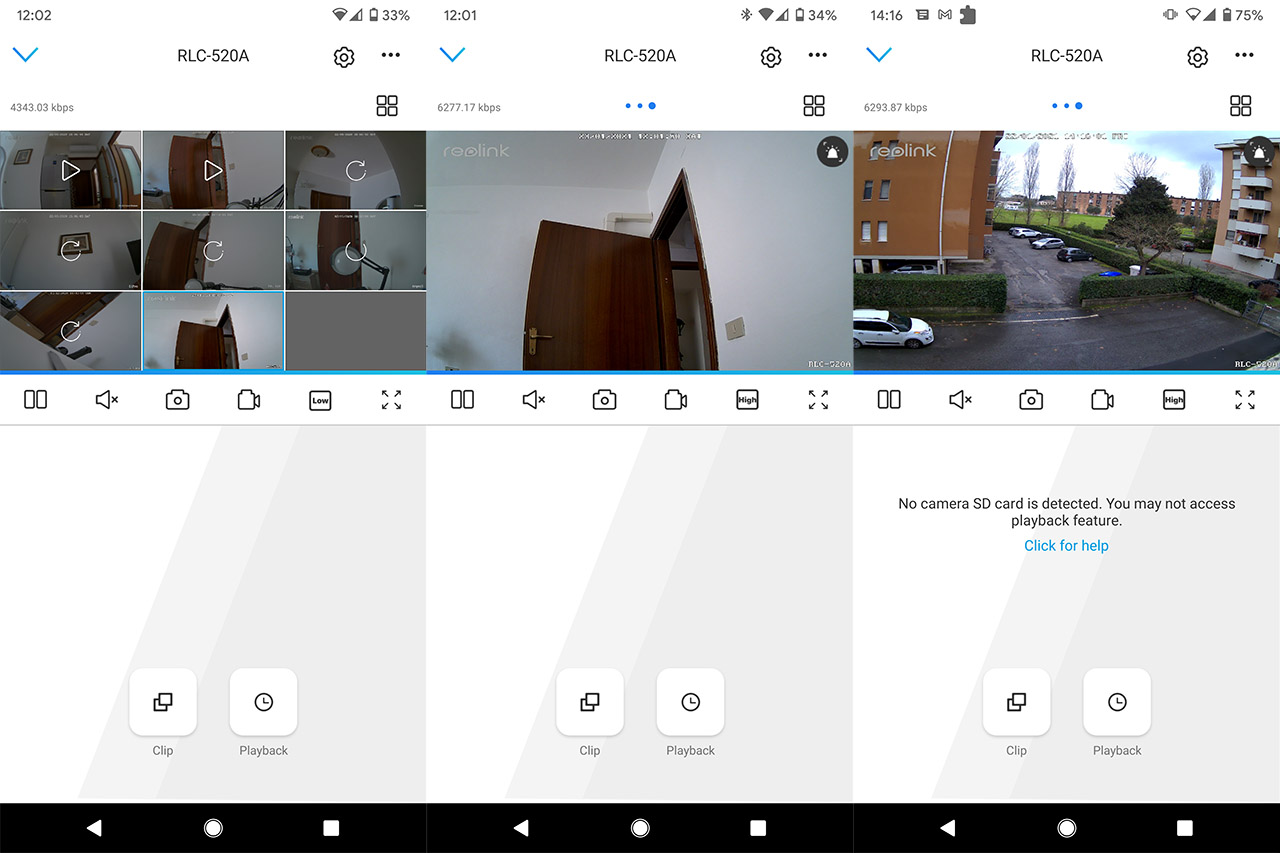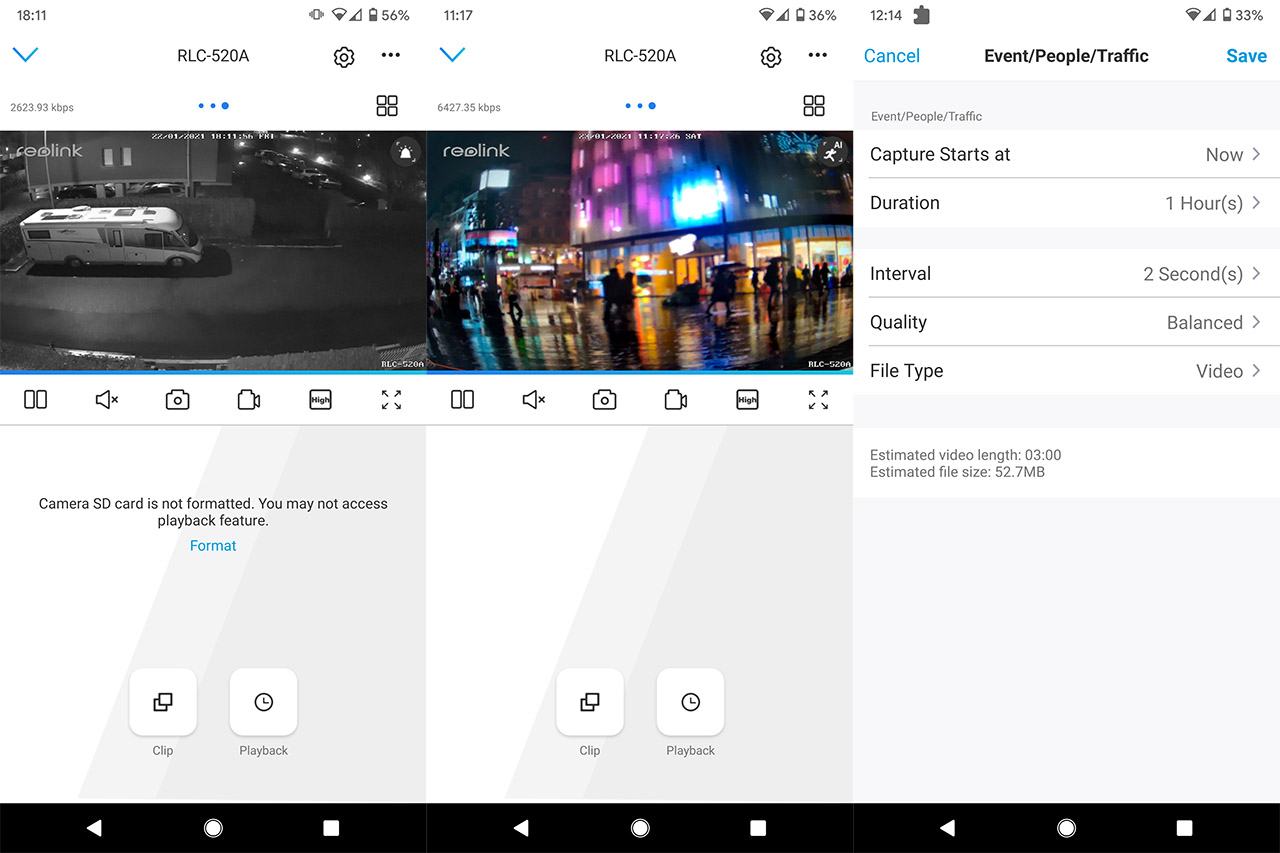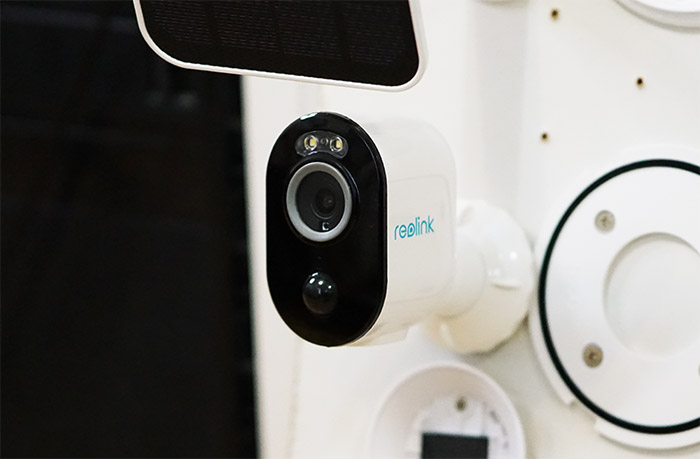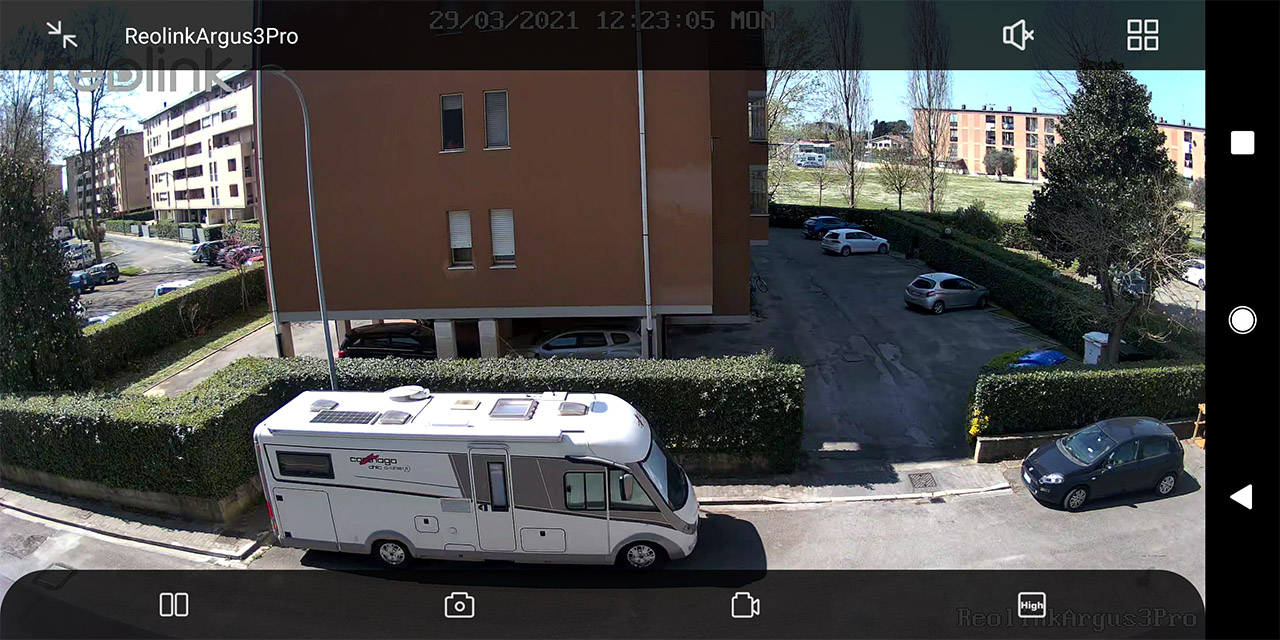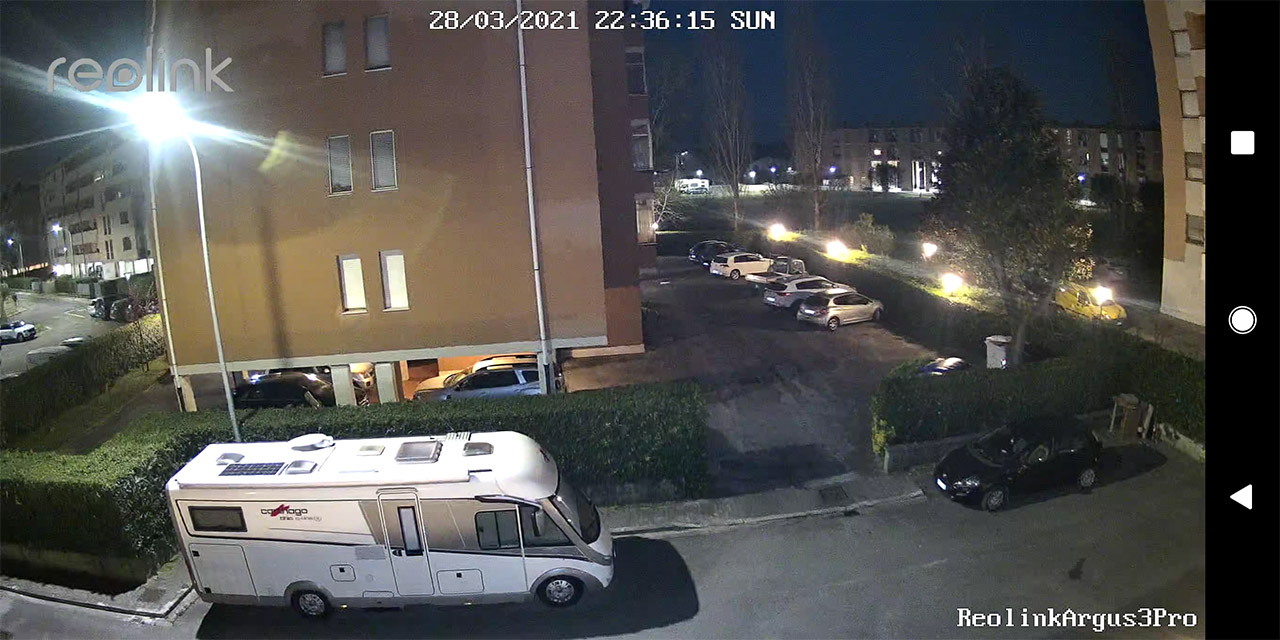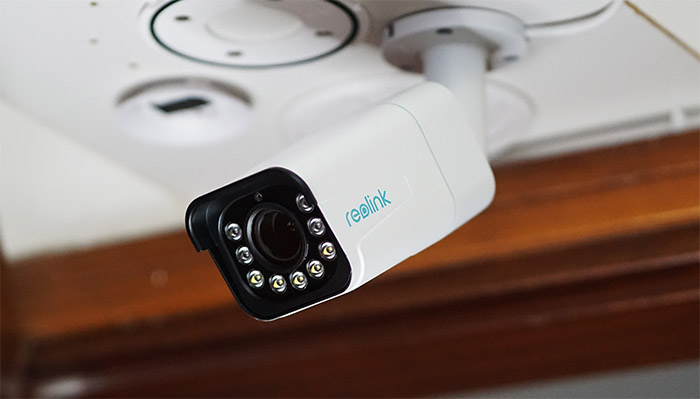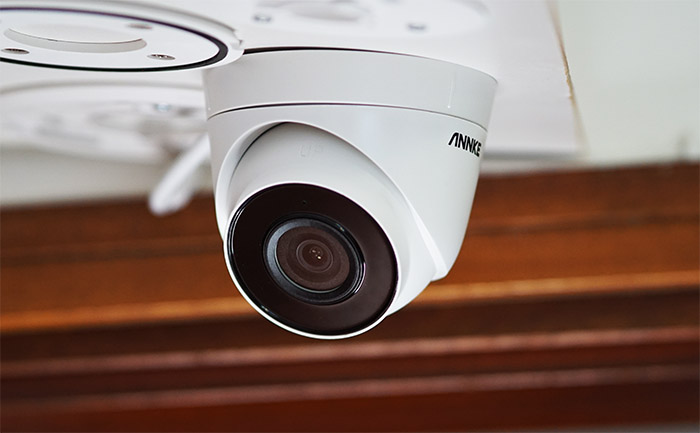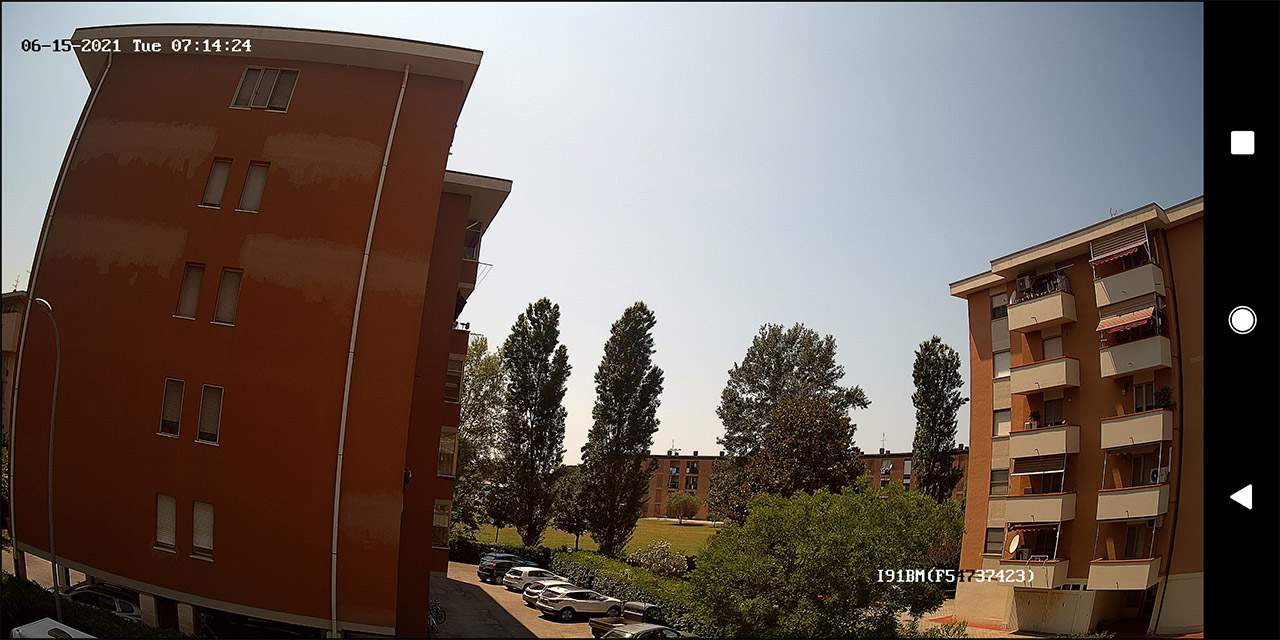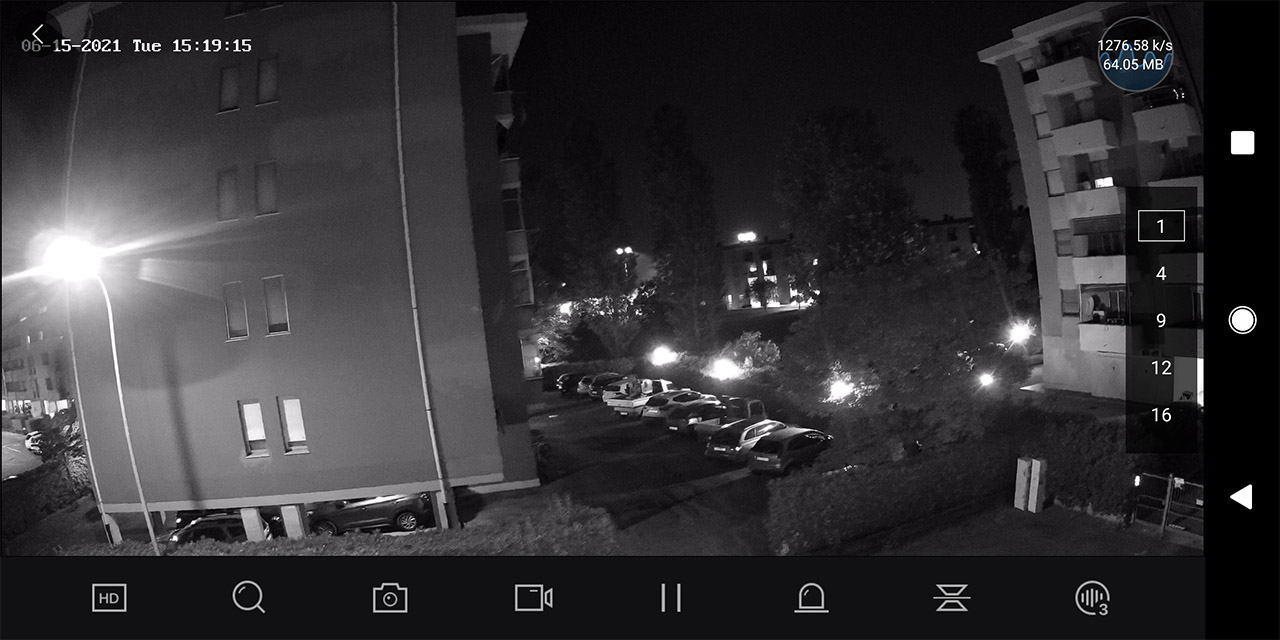If you’re searching for the best night vision camera that’s suitable for outdoor conditions, whether it’s for a small home yard or a warehouse, know that there are a few main factors to take into account to get the best value for your money. The first is obviously going to be the image quality. The camera should be able to capture clear, high resolution videos in order to help you identify a plate number or the face of a trespasser and not only during the day (where all excel nowadays), since the night time performance will truly make a difference for ensuring the security of your surroundings.
I know that the black and white footage has been seen as the standard for decades and for good reason, since the IR LEDs do help paint a clear footage, but newer technologies have managed to bring some color to the night time videos.
It’s true that some cameras rely on a spotlight to achieve a colored night footage, but I saw that some cameras can deliver a clear colored view during the night without a spotlight – I saw it on Annke NC400 (the NightChroma tech). Besides the image quality, the storage options and the security of your data/stream are just as important. Ideally, the best night vision camera should be supported by both native and third-party NVRs and, as a bonus, I would like to see ONVIF and RTSP compatibility.
Local storage (microSDs) should also be a standard for home users and Cloud storage is nowadays a must – I have recently seen a camera, the Tenvis IoTeX Ucam, which could make use of the blockchain to remove any potential security vulnerability and I hope more manufacturers will follow suit.
| Best PoE night vision camera | Best battery-operated night vision camera | The best 4K night vision camera |
| Annke NC400 | Argus 3 Pro | Reolink RLC-811A |
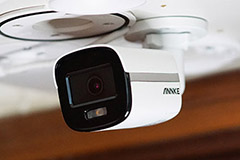 | 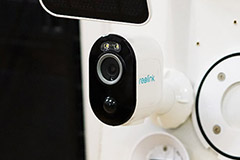 | 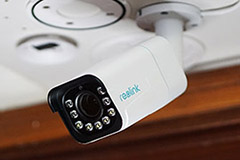 |
| Read More | Read More | Read More |
The software is another important aspect of any camera since you do want easy access to the live footage and some control over the view, including setting up schedules and the motion sensor sensitivity are more than necessary. PoE support is another useful feature, along with a rugged exterior to ensure that the camera can actually survive the outdoor conditions, especially during a harsh winter (not that we get that many of those nowadays). And a speaker + microphone combination can help at scaring off any potential trespassers.
Of course, there are other aspects to take into account as well (such as the zoom, human detection and so on), but these are the main features to help you choose the best outdoor night vision camera and, to make things even simpler, I have compiled a list of the best device available right now which you could take into consideration.
Best PoE night vision cameras
Most outdoors cameras do have support for both PoE and a regular power cord connection, but, since outside, a single Ethernet cable will clearly make installation a far easier process, then PoE is undoubtedly the superior option. I have tested quite a few PoE devices over the years and the best outdoor PoE cameras with great night vision were from Annke and Reolink. Annke is a brand that utilizes Hikvision hardware, but the device that I got to test and was thoroughly impressed by its night vision was the Annke NC400.
| Annke NC400 | Reolink RLC-520A | |
| Lens | 4MP SuperHD, 20fps | 5MP SuperHD, 30fps |
| Resolution | 2560x1440p | 2560x1920p |
| Night Vision | Color + Black and White | Black and White |
| Motion Detection | Yes | Yes (Smart Motion Detection) |
| Spotlight | Yes | No |
| WiFi | No | No |
| Storage | NVRs, third-party software and NAS | NVRs, third-party software and NAS + microSD (256GB) |
| Weatherproofing | IP67 | IP66 |
1. Annke NC400
The reason why I chose the Annke NC400 is because of the NightChroma technology which is able to display an excellent night-time view of its surroundings (the view angle is 120 degrees horizontally). To achieve such a performance, the camera uses the F1.0 Super Aperture to allow more light into the sensor (seemingly a Sony STARVIS) and it’s doing some post processing almost in real-time (if you use the highest quality, you should see a delay of up to a second). This way, the light sources aren’t overblown (the previous Annke generation did have some issue in this regard), there is a lot more detail and little noise even at about 200 feet, where I pointed the camera. As you can see from the footage, everything is clearly visible and in color, and the great news is that the spotlight did not need to be enabled.
It will become active in case the sensor detects that the brightness level is very low (pitch black), otherwise, the camera will inconspicuously film anything that’s going on in front of the lens. The day time footage is also great and yes, the maximum allowed resolution is 1440p and there is support for the SuperHD feature which ensures a better image quality at a lower bitrate. From either the mobile application or the web-based interface, you do get the option to set a motion detection area. You can simply adjust the sensitivity or draw on the image for the section that will trigger the sensor. Since we’re talking about an outdoor camera, the case should be able to withstand the elements and indeed it does.
The Annke NC400 is IP67-rated, so it’s dustproof and will survive powerful jets of water directed towards the camera enclosure, so it should have no trouble surviving any type of storms (just make sure to put some lightning-proof equipment in place to not fry the camera). The temperature at which the Annke NC400 will remain operational is between -22 and 140 degrees F. In terms of storage, the camera has none, no microSD card slot and no Cloud storage available, free or paid subscription.
So, to store the footage, it will use your phone’s storage, but ideally, you should install a third party software such as BlueIris or simply go for an NVR or even a NAS (Synology makes some good hardware – you can check the fairly inexpensive DiskStation DS218+).
| Pluses | Minuses | |
| Amazing color night vision Rugged exterior Has a spotlight Seamless ONVIF and RTSP integration | Has no microSD card slot Has no Cloud storage |
2. Reolink RLC-520A
The Reolink RLC-520A is part of a new series of PoE cameras which comes with the smart motion detection technology. This tech has the role of detecting moving humans and vehicles, so that if you live in a crowded street, the motion detection sensor will be triggered less often by moving objects. And the beauty of it is that it does not require the communication with the manufacturer’s servers and instead, all the processing is done inside the camera itself. Indeed, the RLC-520A has better internal components than most cameras, but what about the night vision performance? Just like Annke NC400, the RLC-520A relies on the SuperHD resolution (2560x1920p) to ensure that the footage remains crisp and noiseless (as much as possible) both during the day and during the night.
Obviously, during the day, the footage at max quality (5MP) is great, a little bit on the contrasty side, but that does not take away from the clarity of the video. Pointing the camera at about 200 feet, the image remained detailed and although the sun was shinning from the left side, the sky does not get overblown.
During the night, the footage is going to be only black and white, but the 18Pcs IR LEDs do a good job at showing any person moving in front of the lens. After I tested the smart motion detection, I can say that it works fine during the night and it could accurately tell apart people from cars up to about 100 feet if there are some light sources in the frame. In case it’s pitch black, I do suggest to add some (at least minor) light source in the area of interest (there are some cheap battery-operated ones) because the RLC-520A does not have a spotlight.
The Reolink RLC-520A will be mounted outdoors, so it needs to survive the elements and it seems that it can handle itself quite well. Indeed, the camera is IP66-rated, which is a level below the NC400, but still enough to ensure that no dust will enter the enclosure and that the water from storms won’t cause issues. The temperature at which the device will remain operational ranges between 14 and 131 degrees F, so it should fare well on most areas of the world, but the truly harsh winters of Canada may prove a bit too much.
Storage-wise, the RLC-520A supports microSD cards (up to 256GB, so quite generous), it has Cloud storage support – there is a free option if you don’t mind the limitations (7-day history + 1GB of Cloud storage). You can always simply connect the camera to a Reolink NVR and there is support for some third-party NVRs (you need to check the compatibility list first), with BlueIris and with some NASes.
| Pluses | Minuses | |
| Reliable night vision Has support for microSDs and Cloud storage Rugged exterior Can connect to third-party software Smart motion detection | No spotlight No colored night vision |
Best battery-operated night vision cameras
PoE is perhaps the best way to hook up a wired camera, but there are times when this is not an option, especially outdoors, so a purely battery-operated camera could provide the needed security for your home, office or warehouse. Netgear’s Arlo camera series has been often regarded as the best overall battery-operated outdoor camera, the Pro 4 sporting the 2K resolution (HDR), a 160 degrees viewing angle, color night vision, a long-lasting battery life and it makes use of the object detection to reduce the number of false triggers. But, since I have not tested any Arlo model, I will just believe the hype that surrounds this device. The problem is obviously going to be the price which is quite high, but the good news is that there are less expensive alternatives, such as the Reolink Argus 3 Pro. This is a camera that I have thoroughly tested quite recently and it has pretty much all the features of the Arlo Pro 4.
| Arlo Pro 4 | Argus 3 Pro | Imilab EC4 | |
| Lens | 4MP HDR, 15fps | 4MP SuperHD, 15fps | 4MP QHD, 15fps |
| Resolution | 2560x1440p | 2560x1440p | 2560x1440p |
| Night Vision | Color + Black and White | Color + Black and White | Color + Black and White |
| Motion Detection | Yes | Yes (Smart Motion Detection) | Optional (Smart Motion Detection) |
| Spotlight | Yes | Yes | Yes |
| WiFi | 2.4GHz | 2.4GHz and 5GHz (802.11n) | 2.4GHz |
| Storage | microSD (minimum 16GB) + Cloud | microSD (128GB) + Cloud | microSD (256GB) + Cloud |
| Weatherproofing | IP65 | IP65 | IP66 |
Argus 3 Pro
The outdoor battery-operated security cameras are always tricky since they need to rely on an internal power source, so the user does need to regularly check that there is enough battery life left to keep the surveilled area secure. The Arlo and the Argus 3 Pro are compatible with solar panels which can be purchased from the manufacturer and they’re not that expensive. But you still get the option to simply detach the Argus 3 Pro from its magnetic bracket and recharge it – the magnets are strong, so the camera cannot be easily removed. The Argus 3 Pro also sports the 2K resolution (Super HD), just like the Pro 4 and lately, Netgear has pushed the supported resolution up to 4K, so the video quality should be great, right? In good conditions, yes, but be aware that the WiFi connection will make a difference, especially in regards to the live view.
The good news is that the Argus 3 Pro can connect to either the 2.4 or the 5GHz network (802.11n) and the average bitrate at max image quality was about 3,100kbps, which means that it’s not really a bandwidth hog.
That being said, during the day, the image quality was really good, again with a bit more contrast than on other cameras from the competition, but it will help make the footage look better, while not taking away from the detail amount or clarity. During the night, things were almost as good and you do have two modes available.
There’s the default black and white video and the color night vision. The black and white footage is helped by the six IR LEDs and the video is fine, showing a healthy amount of details and, even at almost 200 feet (the advertised limit is 100 feet), I could see any suspicious movement – don’t expect to read license plates at this distance though. If you enable the spotlight, the video quality does get far better due to the colors and I do like that even if it had some light sources pointing towards the lens, it did not really affect the quality of the footage. Be aware that the spotlight will eat up from the battery life, but Reolink has added a 6,500mAh battery that should suffice even for a more trafficked street.
Furthermore, the Argus 3 Pro does have the smart motion detection which should help keep the number of triggers to the necessary minimum. This feature will be able to tell apart moving humans from moving cars and the process is internal – it does not rely on a connection to outside servers. Considering that it’s an outdoors-suitable device, the Argus 3 Pro is IP65-rated, so it will keep dust off, as well as jets of water, so it should survive a storm – just add some lightning protection if it’s mounted on a pole in the open. The temperature at which it will be operational is between 14 and 131 degrees F. In terms of storage, the Argus 3 Pro has support for microSD cards (up to 128GB) and it can also store videos into the Cloud.
| Pluses | Minuses | |
| Colored night vision and a spotlight Support for microSD cards (128GB) 2K resolution 6,500mAh battery Smart motion detection | Not 4K Unless you use the solar panel, you need to bring the entire camera with you to recharge the battery |
Imilab EC4
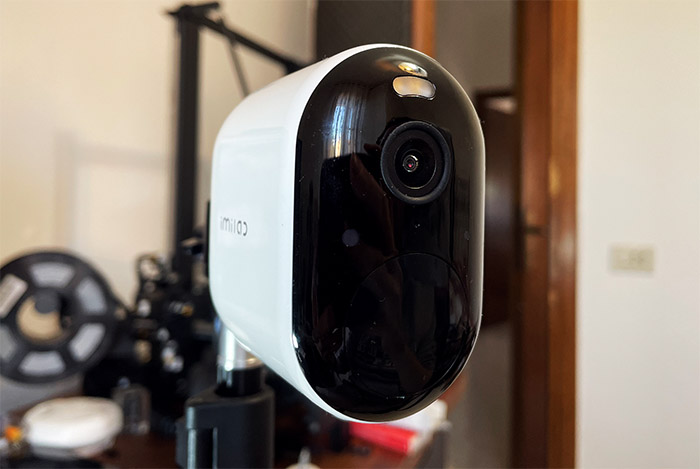
Even if the battery-operated cameras need to maintain an efficient power management, the manufacturers have still managed to push the resolution to 2K (and above), while still offering a decent battery life on a single charge. That was the case with the Arlo and the Argus 3 Pro, and it’s also the case of the Imilab EC4. The camera is a bit smaller than the Argus 3 Pro and, as for the mounting process, the EC4 needs to be screwed into the stand so, as you may guess, you will need to undo these steps every time it’s necessary to recharge the camera.
In a similar manner to the Reolink Argus 3 Pro, it can be kept charged using a solar panel (a separate purchase, sure, but a worthy one). I did mention that this device is a bit particular and that’s because it has a hub that communicates with the camera, and it does support up to 5 Imilab cameras. This way, there is very little lag between the live view and the event itself (although the notifications have proven to be slightly delayed during the night).
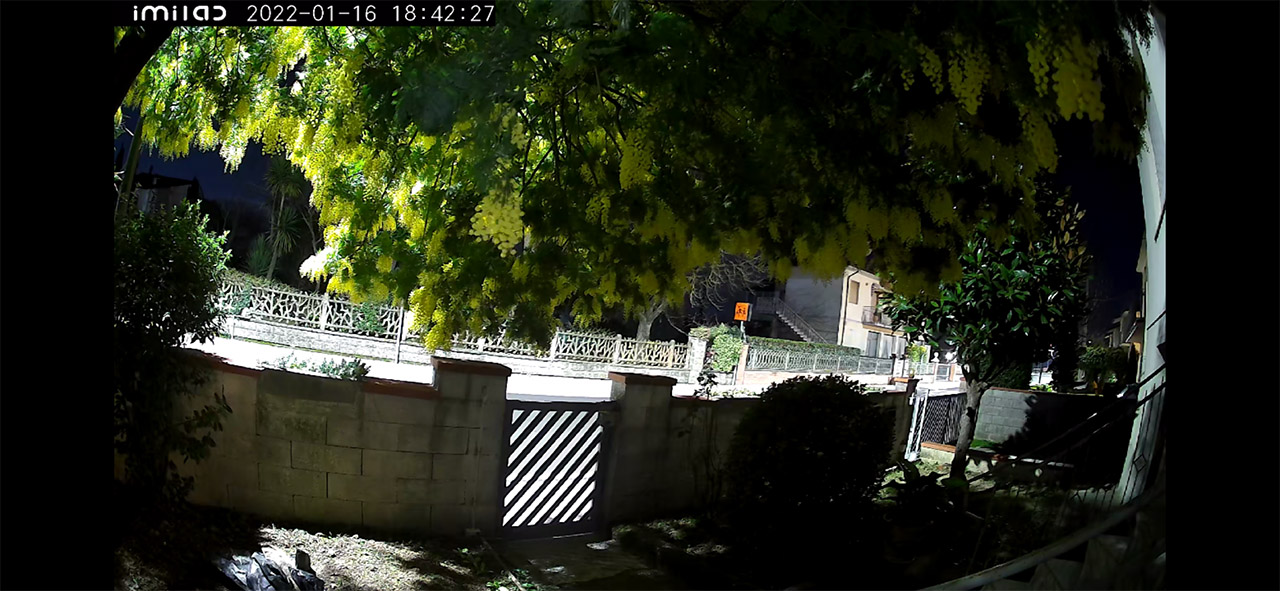
The resolution of the EC4 is 1440p (Imilab calls it 2.5K) and during the day, the video is very clear and detailed (it’s possible to see the car plates even if the filmed area is about 170 feet away from the camera). Just like the Reolink cameras, the image has the contrast raised a little bit, which does make the footage look better – there is also a noticeable amount of lens distortion. As for the night vision, the Imilab EC4 has a colored mode and a black and white mode.
The colored night vision was impressive, so the number of details didn’t differ that much from during the day and there was very little noticeable noise. But, due to the higher contrast, the shadows were a bit darker which made for a really cool-looking image, but not really practical for a security camera. Which is why I prefer to rely on the black and white footage since it negated the possibility that a trespasser may hide in the shadows. Does it look just as good as the colored night vision? No, but it’s far more effective.
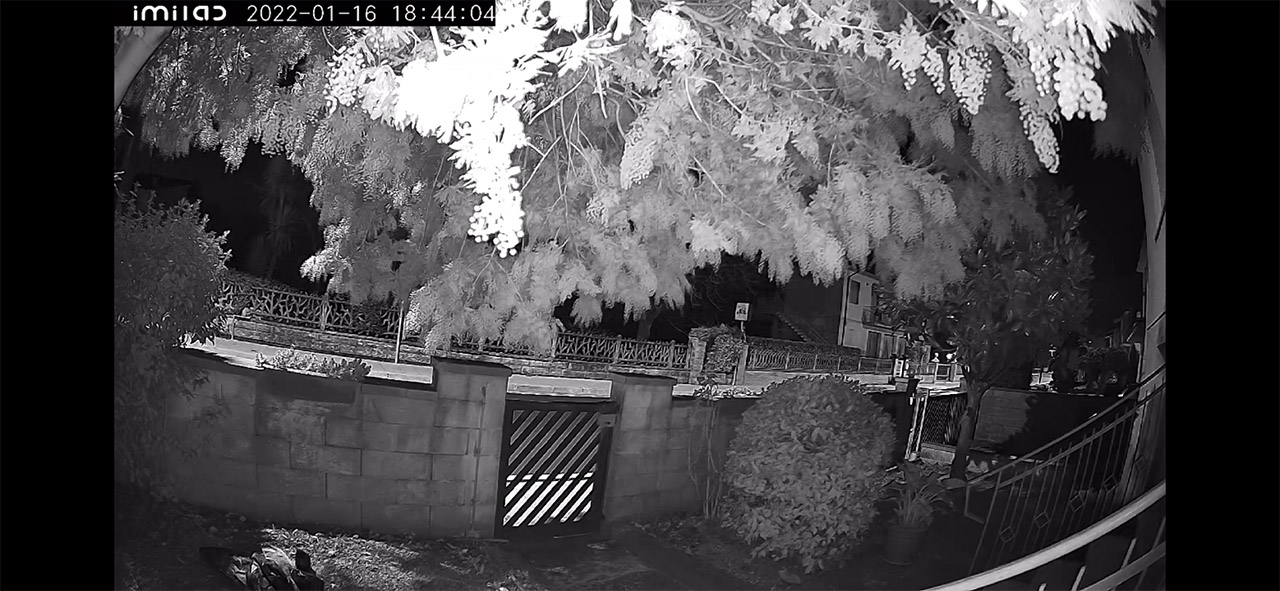
I forgot to mention that the colored night vision is achieved with the help of a spotlight (if there is not enough light in front of the lens). Keeping the spotlight on for too long will quickly eat up the battery life, even if it’s 5,200mAh (a bit lower than the 6,500mAh of the Argus 3 Pro). The EC4 also supports smart motion detection, so, in a similar manner to the Reolink cameras, it should be able to tell when a human is in front of the lens, right?
Apparently so but be aware that it’s not enabled by default, and you will need to purchase a Cloud subscription to be able to use this feature. As for the weather-proofing, the hub needs to always stay indoors, but the camera module is built to withstand the elements, up to a certain point. Indeed, the Imilab EC4 is IP66-rated which means that it’s dustproof and it has a decent protection against water ingress. So, a storm should not harm the camera, but a lightning might, so make sure to add protection against such event. Also, the Imilab EC4 will remain operational when the temperature ranges between -4 and 122 degrees F.
| Pluses | Minuses | |
| 1440p resolution 5,200mAh battery Colored night vision (spotlight) Clear and detailed footage | Not very easy to unmount the camera to recharge the battery The smart motion detection is available only for a Cloud subscription The notifications aren’t very fast during the night |
The best 4K night vision cameras
I am fairly sure that most people are fine with a 1080p security camera if its role is to film a porch or a small yard but, if we’re dealing with a larger parking lot or a warehouse, then more pixels and some zoom capabilities are necessary. I have tested a couple of 4K PoE cameras and both performed really well, the first is the RLC-811A from Reolink that had implemented a smooth 5x zoom and smart motion detection, while the second is the Annke C800 which supports H.265+ video format, has a noise canceling mike and it has a wider support for third-party software and NVRs.
| Reolink RLC-811A | Annke C800 | |
| Lens | 8MP SuperHD, 25fps | 8MP SuperHD, 15fps |
| Resolution | 3840x2160p | 3840x2160p |
| Night Vision | Black and White | Black and White |
| Motion Detection | Yes | Yes (Smart Motion Detection) |
| Spotlight | No | No |
| WiFi | No | No |
| Storage | NVRs, third-party software and NAS + microSD (256GB) & Cloud | NVRs, third-party software and NAS + microSD (256GB) |
| Weatherproofing | IP66 | IP67 |
1. Reolink RLC-811A
Reolink has done a really good job with its new ‘A-series’ which comes with better internal hardware (faster image processing) and with the smart motion detection technology built within the camera’s body. The RLC-811A is currently one of the best cameras that the manufacturer has to offer, sporting an 8-megapixel sensor which can deliver a crisp video at a maximum resolution of 3840 x 2160p and I know that more pixels don’t always translate in a better footage, but Reolink relies on the SuperHD feature to keep the image quality high, while not affecting that much the bitrate. Speaking of which, in my test, it would average at about 6,500Kbps, while the upper limit is set to 8,192Kbps. Any modern router should be able to handle such a low bandwidth requirement, so, if there’s any latency, it’s because of the camera itself and not the PoE connection.
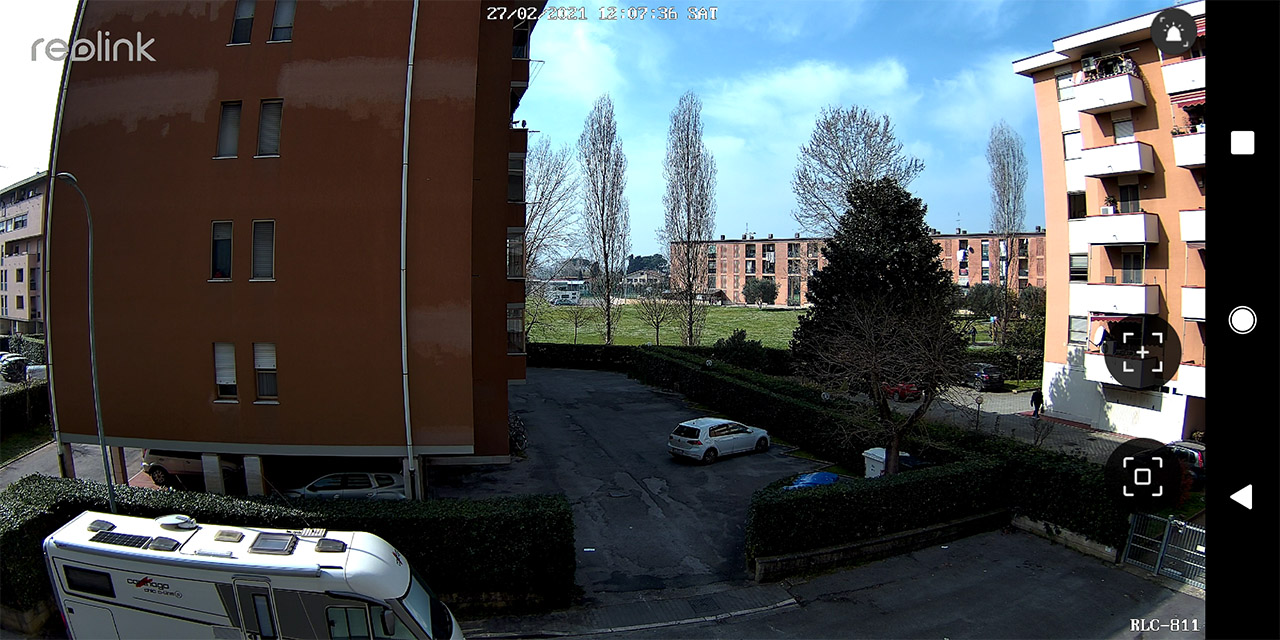
The good news is that indeed, there is pretty much no lag even at maximum image quality neither during the day, nor during the night and what’s interesting is that even the zoom process is quite fast, having a noticeable latency a bit under a second.
The image quality during the day is excellent as always with Reolink cameras, with the footage slightly more contrasty, but with all the details left intact and you do have a large picture of the camera’s surroundings. During the night, the camera did a really good job at not overblowing the light sources even if they were pointed towards the lens and the image is very detailed even if the scenery is farther than the suggested 100 feet (it was pointing at cars that are 200 feet away). You can also add some color to the footage and we also got the 5x zoom option which works great.
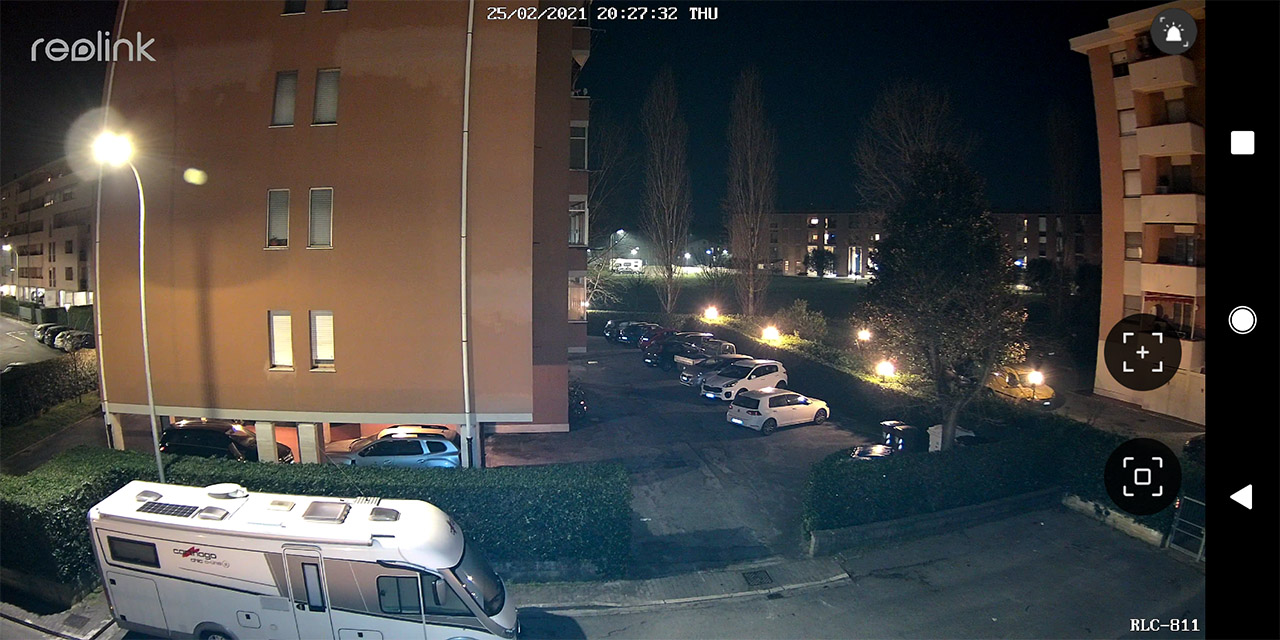
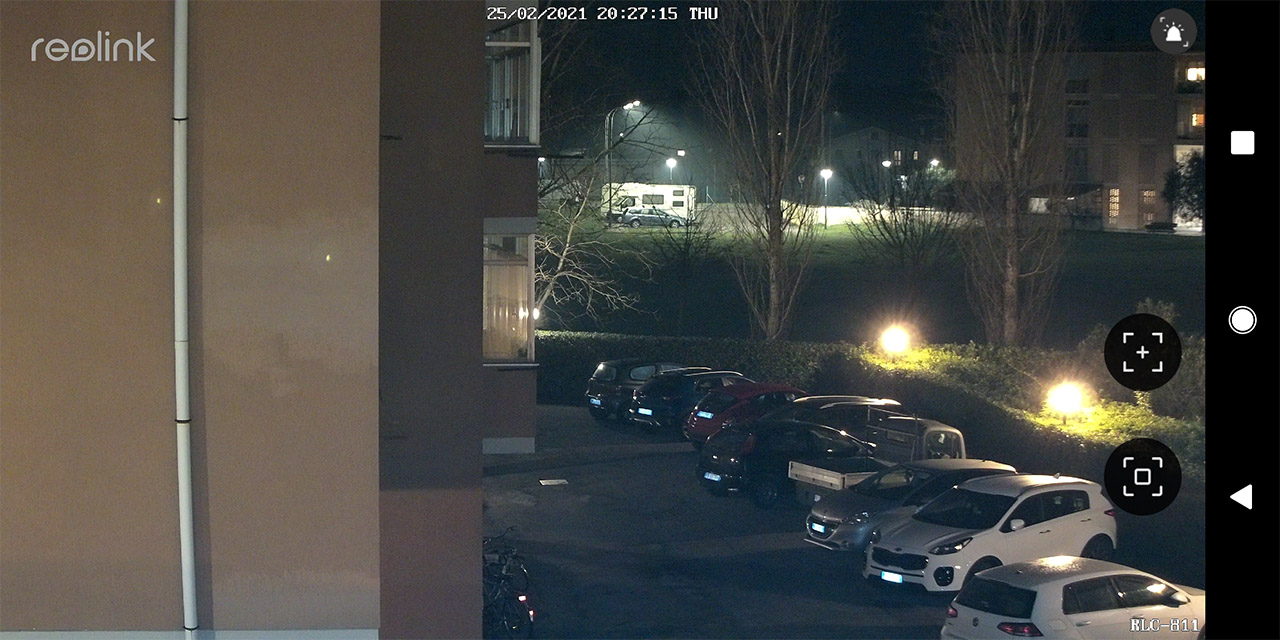
Zooming in to the max, the image didn’t lose any of its details or crispiness, so the RLC-811A is great for surveilling larger areas. If it’s a heavy trafficked street worry not because the smart motion detection tech will do great at detecting people and ignoring any other moving object – just make sure that it’s not pitch black because the camera does not have a built-in spotlight. In terms of ruggedness, the Reolink RLC-811A is IP66-rated, so the case will be able to keep dust away, as well as the rain.
Furthermore, the camera will remain operational when the temperature ranges between 14 and 131 degrees F which should be enough for most countries in the world, minus the areas with very harsh winters. The RLC-811A will allow you to store videos locally using a microSD card (256GB, so it’s plentiful) or you can use the Cloud storage. Additionally, you can connect the camera to proprietary Reolink NVRs or some compatible third-parties, it should also work with BlueIris and some NASes.
| Pluses | Minuses | |
| 4K resolution Smart motion detection 5x zoom MicroSD support Has a spotlight Color Night Vision Rugged exterior | – |
2. Annke C800
Annke is currently releasing a new series of cameras that come with the NightChroma technology (see the NC400), but the C800 is a 4K camera that’s still very much relevant if you’re not bothered by the lack of colored night vision. The Annke C800 makes use of the EXIR technology which is before the NightChroma, but still very much capable of delivering a crisp night time footage, but only if there are no light sources shinning directly towards the lens, otherwise, it will have an impact on the clarity of the video. During the day, the C800 performed really well, offering a very detailed video, even farther than 100 feet and yes, the 4K resolution does make a difference, allowing you to see more details on a larger screen.
Furthermore, the lens had no trouble handling the sun shinning towards the lens. It’s interesting to see that the footage has a bit more contrast, just like the Reolink RLC-811A. During the night, things are a bit different because as I said before, the two IR LEDs aren’t really enough to keep light sources from being overblown.
So, to get a good and reliable video, you need to keep the camera away from light poles – I had one pointing directly towards my house and the impact is noticeable. Just like the NC400, you do get the option to configure the way the camera will function using either the app or the web-based GUI and the latter is very comprehensive in terms of features (far above most other security cameras out there).
There is, of course, the seamless ONVIF and RTSP integration, so you get connect the C800 to third-party NVRs, third-party software and even NASes (just check the compatibility list) and the manufacturer has added a microSD card slot for local storage. The camera body is rugged enough to withstand most outdoor conditions and yes, it’s IP67-rated, blocking both dust and water ingress, regardless of how powerful the wind or the storms are in your region. Additionally, the device will remain operational when the temperature will range between -22 and 140 degrees F which is a bit better than how the Reolink cameras are built.
| Pluses | Minuses | |
| 4K resolution Local storage (microSD card) Seamless ONVIF and RTSP integration Rugged exterior | Does not handle well light sources pointing towards the lens No colored nigh vision No spotlight No Cloud storage |

Mark is a graduate in Computer Science, having gathered valuable experience over the years working in IT as a programmer. Mark is also the main tech writer for MBReviews.com, covering not only his passion, the networking devices, but also other cool electronic gadgets that you may find useful for your every day life.

